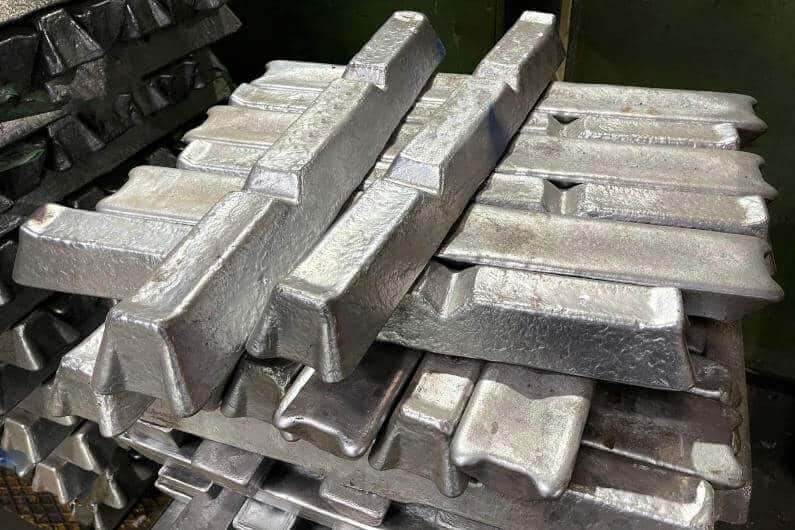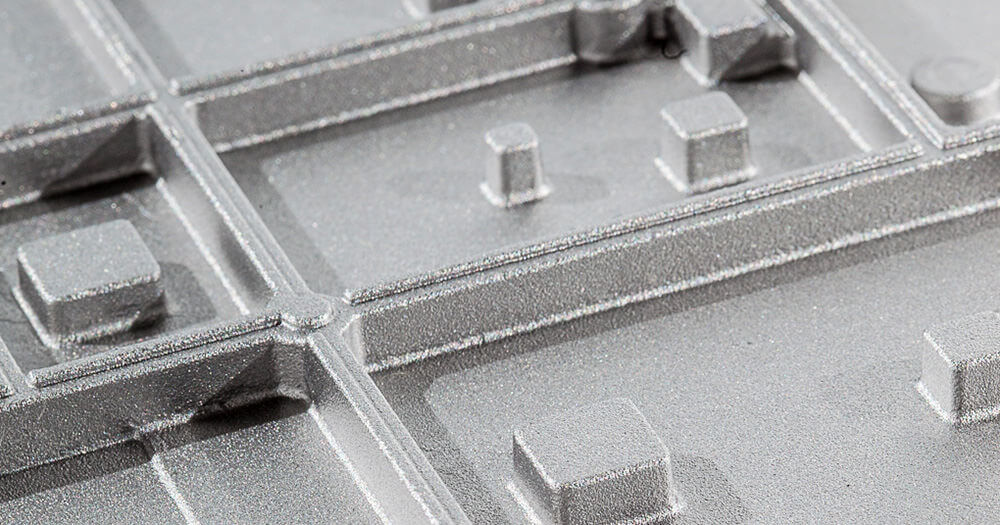4 Simple Techniques For Stahl Specialty Company
4 Simple Techniques For Stahl Specialty Company
Blog Article
Everything about Stahl Specialty Company
Table of ContentsStahl Specialty Company Things To Know Before You BuyStahl Specialty Company Can Be Fun For EveryoneThe Of Stahl Specialty CompanyThe 10-Minute Rule for Stahl Specialty CompanyGet This Report about Stahl Specialty CompanySome Known Details About Stahl Specialty Company

If you're developing a metal item, you've likely considered using aluminum as the base product. Pure aluminum has actually restricted applications, so it is typically incorporated with various other components, such as silicon, magnesium, and manganese to develop alloys.
(AA), based in North America, has created specifications that control light weight aluminum alloys' composition, residential properties, and nomenclature. There are two kinds of aluminum alloys functioned and cast.
The 5-Second Trick For Stahl Specialty Company
Cast aluminum alloys are made by melting pure light weight aluminum and integrating it with various other metals while in fluid type. The mix is poured into a sand, pass away, or financial investment mold.

160.0 represents a cast with a minimum of 99.60% aluminum. The fourth number, which follows the decimal factor, defines if the alloy is a casting (xxx. 0) or an ingot (xxx. 1). Wrought aluminum alloys likewise start by incorporating liquified light weight aluminum with other metals. Unlike cast alloys, however, they are developed right into their last form with processes such as extrusion, rolling, and flexing after the metal has solidified right into billets or ingots.
There are many small distinctions between wrought and cast light weight aluminum alloys, such as that actors alloys can contain more significant amounts of other metals than wrought alloys. Yet one of the most notable difference in between these alloys is the manufacture procedure with which they will certainly go to deliver the end product. Aside from some surface treatments, cast alloys will leave their mold and mildew in practically the precise strong form wanted, whereas functioned alloys will undertake numerous alterations while in their strong state.
If you believe that a functioned alloy might be the finest for your project, take a look at some of our posts that explain more about particular functioned alloys, such as Alloy 6061 and Alloy 6063. On the various other hand, if you assume a cast alloy would certainly be much better for you, you can discover more about some cast alloys in our Alloy 380 and Alloy 383 articles (coming quickly).
Stahl Specialty Company - The Facts
When choosing a light weight aluminum foundry for your manufacturing needs, it's crucial to study several factors. One of one of the most crucial elements to consider is the experience and capability of the foundry. Foundry near me. Picking a foundry who has the best knowledge of the aluminum casting process, and the profile to reveal for it, helps to have an effective result for your project
Having the experience and industry understanding to craft your castings for optimal manufacturing and top quality end results will certainly streamline the job. Making light weight aluminum spreading requires a complicated set of procedures to attain the ideal outcomes. When the original source choosing on a new aluminum shop to partner with, guarantee they have substantial sector experience and are knowledgeable about all elements of the light weight aluminum casting process: style, production, product evaluation, and product testing.
The foundry needs to likewise have a tested track document of providing extraordinary products that fulfill or exceed customer expectations. Quality assurance ought to likewise be at the top of your checklist when picking a light weight aluminum foundry. By collaborating with a qualified shop that follows the requirements for high quality control, you can safeguard the integrity of your item and guarantee it satisfies your specs.
By choosing a company who supplies solutions that satisfy or surpass your product requirements, you can be certain that your task will certainly be completed with miraculous accuracy and effectiveness. Certain light weight aluminum foundries focus on details types of manufacturing procedures or casting techniques. Various components need various production techniques to cast aluminum, such as sand casting or die casting.
Stahl Specialty Company Fundamentals Explained
Die spreading is the name provided to the procedure of creating complex steel components through usage of mold and mildews of the part, likewise called passes away. The procedure uses non-ferrous metals which do not consist of iron, such as light weight aluminum, zinc and magnesium, due to the desirable buildings of the steels such as reduced weight, greater conductivity, non-magnetic conductivity and resistance to corrosion.
Pass away spreading manufacturing is quickly, making high manufacturing degrees of components easy. It produces more elements than any other procedure, with a high degree of accuracy and repeatability. To get more information about die spreading and die casting materials utilized in the process, continued reading. There are 3 sub-processes that fall under the group of die spreading: gravity pass away spreading (or irreversible mold casting), low-pressure die casting and high-pressure die spreading.
After the pureness of the alloy is examined, passes away are developed. To prepare the passes away for spreading, it is vital that the passes away are clean, so that no deposit from previous manufacturings remain.
Examine This Report about Stahl Specialty Company
The pure steel, also called ingot, is contributed to the furnace and maintained the molten temperature level of the metal, which is then transferred to the shot chamber and injected into the die. The stress is after that maintained as the metal solidifies. As soon as the metal strengthens, the cooling process starts.
(https://writeablog.net/stahlspecialc/stahl-specialty-company-is-one-of-the-largest-permanent-mold-foundries-in-the-us)
The thicker the wall surface of the component, the longer the cooling time as a result of the amount of interior metal that likewise needs to cool. After the component is completely cooled, the die halves open and an ejection mechanism pushes the part out. Adhering to the ejection, the die is shut for the following shot cycle.
The flash is the added product that is cast during the process. This should be trimmed off using a trim device to leave simply the primary component. Deburring eliminates the smaller pieces, called burrs, after the cutting procedure. Lastly, the component is brightened, or burnished, to offer it a smooth coating.
The Buzz on Stahl Specialty Company

Zinc is among the most pre-owned alloys for die spreading as a result of its reduced price of basic materials. It's likewise one of the more powerful and stable steels. And also, it has exceptional electric and thermal conductivity. Its rust resistance also allows the components to be durable, and it is among the much more castable alloys due to its reduced melting point - Casting Foundry.
As stated, this alloy is just one of one of the most frequently utilized, yet manufactures will, sometimes, pick aluminum over zinc because of aluminum's production advantages. Aluminum is highly cost-effective and one of the a lot more flexible alloys. Aluminum is utilized for a number of various products and markets anything from window structures to aerospace materials.
Report this page